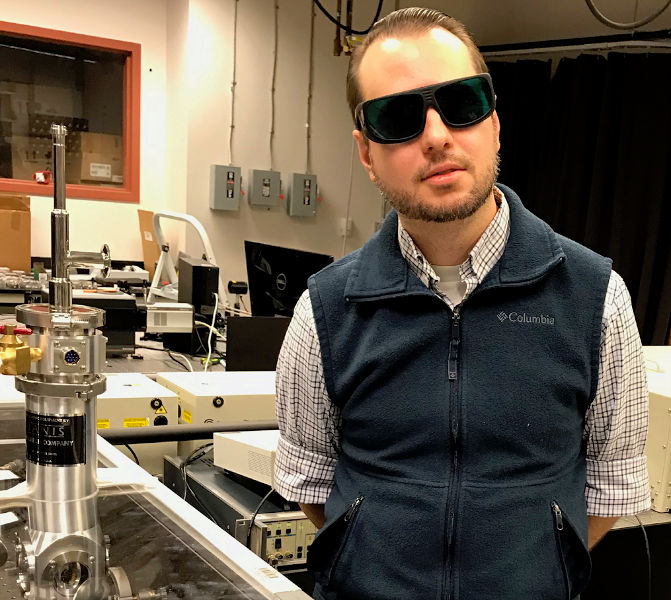
The history of photovoltaic devices, such as solar cells, dates back to 1876. British researcher William Grylls Adams, with help from one of his students, discovered that when selenium was exposed to light, it produced electricity. Much like those previous researchers, Wayne State’s Aaron Rury, Ph.D., also seeks to answer questions about using sunlight to power our world through fundamental scientific discoveries.
“We all know about solar cells today, but we don't think about the 50 years or more of fundamental scientific research that went into the silicon production — understanding the properties of silicon — so that you could actually formulate it into the crystalline structure and scale you need to make a solar panel,” said Rury, assistant professor in Wayne State’s Department of Chemistry. “What we are doing is extremely fundamental scientific research. We are studying something at a very basic level, and we have no idea where it will go.”
In September 2018, Rury and 30 other scientists and engineers from 24 research institutions and businesses received awards from the U.S. Air Force Office of Scientific Research (AFOSR). Each researcher submitted winning proposals through the Air Force's Young Investigator Research Program (YIP) and received a three-year grant totaling $450,000. Through this award, Rury’s project on Coherent Vibrational Spectroscopy of Charge Transfer Cavity Polaritons focuses on moving away from what he calls traditional synthetic methods to form the chemical fuels we use every day.

“We're forming new states of energy called polaritons,” Rury said. “A polariton is the sharing of energy between light particles — which are called photons — and the electrons of a molecule." Rury is using funds from the AFOSR YIP to understand how forming these polaritons changes the structure of the molecule, a key to controlling the molecule's ability to make fuels through photochemistry.
Think of it like photosynthesis, he said. Photosynthesis is a process that plant life and certain bacteria use to form chemical fuel from sunlight and other molecules lying around such as water and CO2.
“To break this down, the basic premise of chemistry is to form molecules that have a particular function. The way they're connected in space is what dictates what kinds of properties the molecule has,” Rury said. “Can it absorb sunlight? Can it then take that sunlight and turn it into a charged particle that can be used to do more chemistry? Those are the fundamental properties of molecules that plants use to make energy. And it's the basis for all of life on Earth.”
However, to stay alive, plants need efficient photosynthesis critically dependent on the structure of molecular subunits in their leaves. Rury points out that, unlike plants, humans don't have 1 billion years to evolve and figure out those structures if they want to copy plants' ability to use the sun to make fuels. New methods are needed to control molecular structure that enable efficient fuel production with light.
The U.S. Air Force and other federal agencies are keenly interested in all kinds of new methods to produce fuel, Rury said, because they use a lot of it. “You have to put aircraft into the air, and that takes a tremendous amount of energy. For the most part, all of that energy comes from fossil fuels,” Rury said. “And while there’s an abundance of fossil fuels in the United States, it's not an infinite amount.”
The Air Force's Young Investigator Research Award is given to researchers who show an exceptional ability and promise for conducting basic research of military interests. The program’s objective is to foster creative basic research in science and engineering, enhance early career development of outstanding young investigators, and increase opportunities for young investigators to recognize the Air Force mission and the related challenges in science and engineering.
Rury is using the AFOSR YIP award to train graduate and undergraduate students to answer these questions through fundamental scientific research. And the Air Force is looking forward to potential possibilities those answers will enable in the real world.
“With this award, we want to understand how does this process of charge formation and charge separation, following light absorption, change when you form these polaritons,” Rury said. “Can we control the structure of the molecule to such an extent using the polaritons that we can enhance the separation of charge in an excited state after it absorbs sunlight? Can we inhibit the formation of another excited state product that we don't want? Do we get new levels of control in getting the property we want versus traditional, synthetic chemistry where you cook something in a beaker for a long time?”
